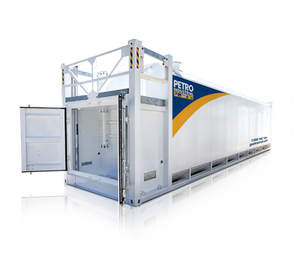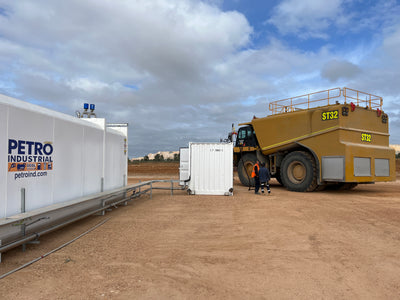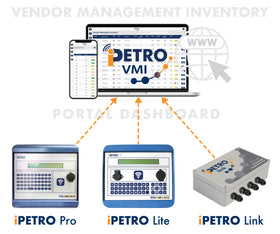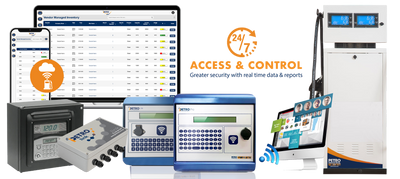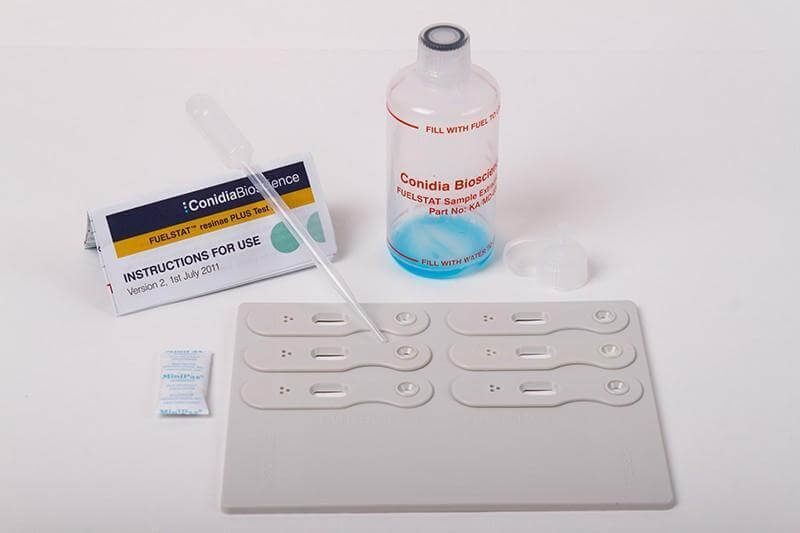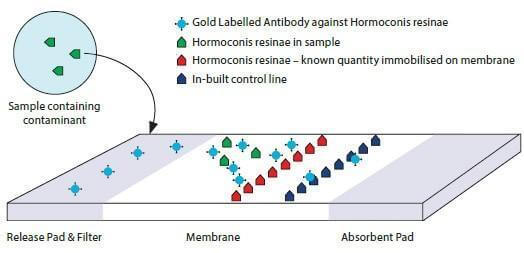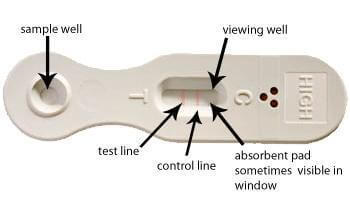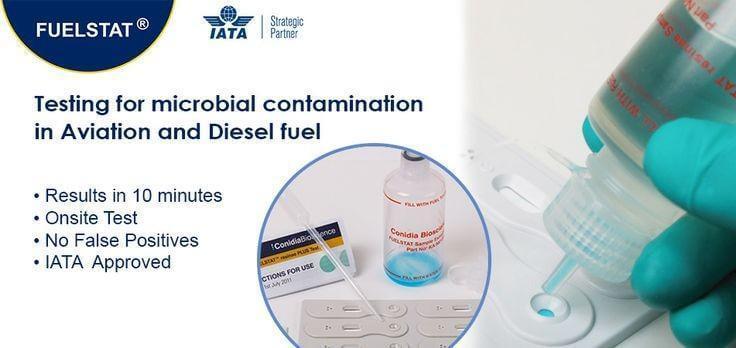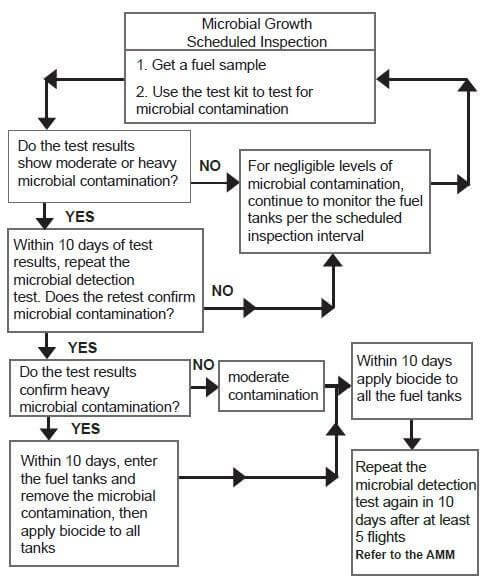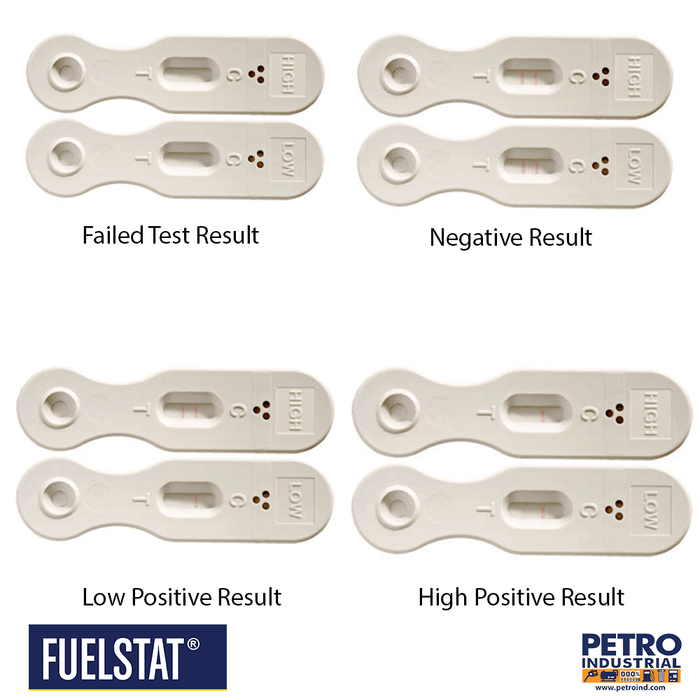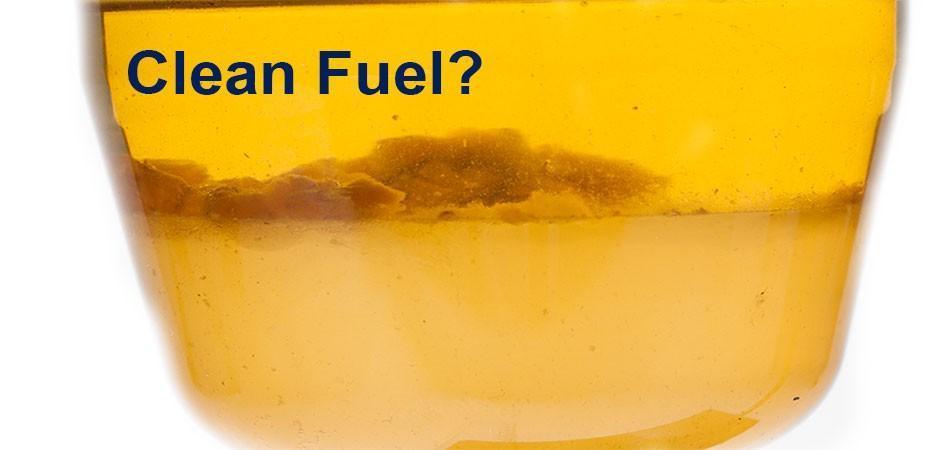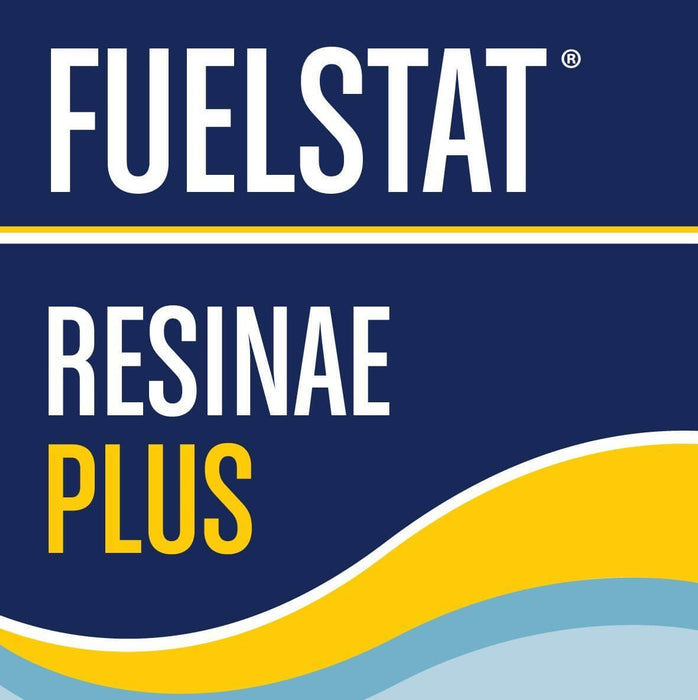

Description
FUELSTAT® Rapid On-site Test kits - Aviation
The On-site FUELSTAT® Aviation test kit box includes 8 individual tests.
With the FUELSTAT® on site fuel testing kit all you need is 10 minutes, a flat, clean surface, a pair of latex gloves & a 200ml sample to discover which bugs are living in your fuel.
The easy to interpret, pregnancy-style test gives a negligible, low, or high reading which corresponds to the limits laid down in the IATA Guidance Material on Microbial Contamination in Aviation Fuel tanks.
This clearly indicates the aircraft’s fuel system status, and what action to take, if any.
“IATA Strongly recommends testing of each aircraft fuel tank for microbiological contamination at least once a year.”
The Jet Fungus Problem
- Microbes thrive wherever there is food and water. Aviation fuel systems are therefore ideal habitats for bacteria, yeasts and moulds.
- Bugs which grow unchecked can block fuel filters, cause gauging problems and are so corrosive, they can damage the aircraft tank structure.
- There is no magic bullet to eliminate the problem.
- A multi-disciplinary approach to fuel hygiene is the key to avoiding the inconvenience and cost of a contaminated fuel tank.
- Good fuel hygiene entails implementing a risk assessed “rigid housekeeping regime”.
- The risk of contamination is increased in hot, humid conditions, especially where the fuel comes from a source that has fewer quality control checks.
- Each airline should carry out its own risk assessment to establish an optimum regime.
The Science
- Micro-organisms can grow in certain fuels by using the alkanes in the fuel as a foodstuff.
- In some cases, they may be able to utilise some of the additives in the fuel.
- Mid to light distillate fuels are particularly susceptible to contamination by micro-organisms, although more recently there are increasing reports of gasoline being affected, particularly some of the more “environmentally friendly” products.
- The type of organisms and the damage inflicted depend upon on the fuel and the additives.
This is for a number of reasons:
Firstly, its size and bulk. When compared to single cell yeasts and moulds, H. res.produces far more biomass and is thus more likely to cause blockage problems.
Secondly, it is by far the most common cause of microbial corrosion in aircraft tanks. Other organisms are more important in other circumstances, for example, in some ship fuels and in long-term storage. Other important corrosive organisms are the anaerobic bacteria, collectively known as Sulphate Reducing Bacteria (SRB) or, more accurately, Sulphide Generating Bacteria (SGB). These are not common in aircraft wing tanks because of the high level of aeration produced during flight and refuelling.
Thirdly, because of the way H. res. grows between fuel and water, it usually starts on small water droplets. It then covers the droplet, holding it in place, and continues its growth, actually generating more water under the mat due to its metabolism. In the process, it firmly attaches itself to the tank. Bacteria and yeasts require free water and are found, mainly, floating in the water phase. This means that they are less likely to adhere to surfaces and will, therefore, be significantly reduced at each water drain. H. res., once established, continues to multiply in situ.
In aircraft, high levels of bacteria and yeasts tend to indicate that you have picked up poor quality fuel and, as such, are useful indicators. However, this does not necessarily mean that they are causing any problem in the tank, and they will probably be significantly reduced at the next drain. High levels of H. res., however, indicate that there is, potentially, a serious problem.
Introduction
- There are a number of different types of microorganisms that can grow in certain types of fuel. The biggest problem is presented by a filamentous fungus called Hormoconis resinae, (H Res).
- Previously called Cladosporium resinae, and more commonly referred to as “Jet Fuel Fungus”.
- H Res is a fungus that thrives in aviation fuel. It requires only a minimal amount of water content in the fuel to grow and will cause filter blockages, gauging errors and tank corrosion if left unchecked.
- Bacteria and other types of fungi, particularly some yeasts can also cause problems in fuel tanks, usually acting as a consortium.
- The objective of the test is to provide rapid screening of fuel samples (water in fuel or fuel), giving a quick and accurate assessment of H Res, bacteria & other fungi including yeasts in the fuel tank.
- This test is unlike current growth-based tests, which require a minimum of 72 hours to provide any results.
- The test measures the amount of active growth in the sample and provides actions and alert levels.
- The FUELSTAT® resinae PLUS test measures the amount of different types of contamination: H Res, bacteria and fungi actively growing in the sample and reports that as the weight of material in the sample. This is a newer, more accurate measurement system than the old Colony Forming Unit (CFU) count.
- The test provides results based on a traffic light scenario:
- Negligible (green) – negligible contamination.
- Low Positive (amber) – moderate contamination.
- High Positive (red) – heavy contamination.
Kit Contents:
- Each heat sealed foil pouch contains a Paddle with desiccant sachet and pipette in one section and Sample Extraction Bottle with flat cap, dropper cap and instructions for use in the other section.
- Paddle: Plastic base with 6 lateral flow devices affixed.
- Preparation Bottles: 175ml plastic bottle with flat cap and “dropper” cap containing 3.0ml of Sample Extraction Liquid.
- Disposable, single use, plastic pipette.
Storage and Stability
- No special transport precautions Store below 30°C.
- Use between 10° and 30°C.
- Do not use after the stated expiry date.
- Long term freezing is not recommended.
How FUELSTAT® Works
- The FUELSTAT® resinae PLUS DIESEL test utilises lateral flow technology and antibodies to H Res, bacteria and fungi which grow in diesel fuel.
- The gold-labelled antibody is immobilised in the Release Pad under the sample well.
- The sample containing an unknown amount of contamination is added to the sample well and this re-hydrates, allowing the reagents to flow up (wicking) the membrane towards the absorbent pad.
- Any large particles in the sample, which may block the reaction, are blocked by the filtering action of the pad.
- During the wicking, the contamination in the sample will bind to the specific antibodies.
- As the liquid reaches the Test Line (T) any free gold-labelled antibodies will bind to the test line.
- This means if more contamination is in the sample than the threshold engineered, there will be no antibodies to bind to the Test Line, no red line will appear, and this is a POSITIVE result.
- If the amount of contamination in the sample is lower than the threshold, there will be free antibodies to bind to the Test Line, a red line will appear, and this is a NEGLIGIBLE result.
- The quantities of materials immobilised in the device are engineered to provide results at the different thresholds of H Res, bacteria and fungi in each of the test devices on the Test Paddle.
Actions Following Testing
- Based on the IATA Guidelines, but we advise that each user should define their own policy on test frequency and actions following a positive test result. For specific aircraft type actions, users should refer to the AMM.
- If the detection test shows contamination from either H Res, bacteria or fungi then do the scheduled inspection test more often.
- If the detection test shows microbial growth, then do the scheduled inspection test more often.
- After treatment with biocide, don’t test again until you fly at least 5 flights. This is to make sure that fuel treatment with biocide is fully removed from the fuel tanks before the next test.
- If the biocide treatment is not effective using 1/3 fuel load, use a biocide treatment with a full fuel load and use the maximum soak time. The contamination may be towards the top of the tank.
Warnings and Precautions
- Caution should be exercised in the handling of fuel or other hazardous materials in accordance with Health and Safety procedures.
- Optimum results will be obtained by strict adherence to this protocol.
- Each paddle is disposable. Use only once.
- The paddle in the foil pack should be kept sealed until ready for use. Once the foil pack is opened the shelf-life of the device is not guaranteed. It should be used as soon as possible.
- The viewing window of the test device should not be touched.
- The paddle should be kept dry at ALL times. DO NOT USE if the device becomes wet.
- If the paddle appears damaged, scratched or marked in any way please contact PETRO Industrial.
Sample Preparation Procedure
- Take a sample from the fuel tank into a clean container.
- Allow the sample to “settle” and any water to accumulate at the bottom of the sampling container.
- NOTE: When possible, test the water phase of the sample taken from the fuel tank. Testing the water phase will provide more accurate results than testing the fuel stage.
Testing Procedure (the same method is used for either test kit)
1. Unscrew and remove the top from the Fuelstat® Sample Extraction bottle.
- For the Fuelstat® resinae Plus test kit: If there is 15ml of water in the sample, then add the water to the bottle up to the “Water Phase” line. If there is less than 15ml of water in the sample, then add all the water and the fuel from the sample to the bottle, up to the “Fuel Phase” line.
- For the Fuelstat® resinae test kit: If there is 5ml of water in the sample, then add the water to the bottle up to the “Water Phase” line. If there is less than 5ml of water in the sample, then add all the water and the fuel from the sample to the bottle, up to the “Fuel Phase” line.
- (Identical procedure for the remaining part of the test)
2. Replace the top and shake the bottle for 5 seconds.
3. Invert the bottle and allow the blue solution to settle completely into the dropper.
4. Remove the Test Paddle from the foil pouch.
NOTE: Do not touch the viewing windows on the test paddle. Touching the viewing windows can contaminate the test paddle. Inspect both viewing windows. There should be a faint blue line opposite the Control Line mark (C). This is used in the production process to line up the device correctly. It has no actual function in the test and will disappear when the sample moves up the wick. If any other visible lines show in a viewing window, then the paddle is contaminated.
5. Write the aircraft number, tank number aircraft cycles and hours onto the test paddle.
6. Remove the cap from the top of the Fuelstat® Sample Extraction Buffer bottle.
- Discard the first two drops from the bottle.
- Place 4 drops of the blue extraction liquid in each sample well. (The sample well will turn blue).
- NOTE: The blue extraction liquid, NOT the fuel or water sample, must be placed in the sample well.
7. Keep the test paddle flat for at least 30 seconds.
8. Wait for 10 minutes.
- Make sure the Control Lines show after 10 minutes.
- If any Control Lines do not show, then the test is not valid. Read within 30 minutes
Troubleshooting
|
Problem
|
Cause/Remedy
|
|
No drops from bottle
|
Particulate material in the sample may be blocking the dropper nozzle. Shake bottle again, allow to settle and then gently squeeze the bottle until drops appear.
|
|
No blue dye flow
|
Add an additional drop, one at a time, until flow is achieved.
|
|
No control line visible
|
Too much sample added or fuel flooded device and test flooded. Repeat with new Test Paddle.Flow components exposed to wet or damp. Repeat test using new Test Paddle.
|
|
Faint red Test Lines
|
Low level of contaminant present or uneven flow of sample. This may be due to insufficient sample added or sample not mixed vigorously enough.If Test Line is very faint, appears to be a shadow and is only visible at close range, then it should be considered to be Positive.
|
|
Control and Test lines are blue in colour
|
Extractor fluid not mixed with Fuel/Water sample properly or Fuel/Water added to sample well. Repeat test using a new Test Paddle
|
|
Damaged Devices or bottles
|
Contact PETRO Industrial. Please quote the batch number for reference.
|
|
Lines appear before sample added
|
Test device made wet. Repeat test with new Test Paddle.
|
We routinely biocide our storage tanks, what added value would FUELSTAT® offer us?
- This question supposes that the system you currently operate includes draining water and then biociding the fuel in the storage tank.
- Draining the water from the tanks is the key basis for any control system.
- However, there are problems associated with routine biociding.
- Firstly, it involves costs in terms of manpower and the biocide itself.
- Next, there can be problems with warranties from the engine manufacturers if there is any doubt about the ppm levels of biocide in fuel.
- Routine use of biocides has risks in two areas; firstly there are health and safety considerations in the use of biocides; we suggest that its use should, therefore, be restricted to the minimum required to maintain clean fuel.
- Finally, unless the correct ppm level is maintained throughout the soak period, there is a danger that a resistant strain or strains of microbes will be produced.
- This last is the main reason why the preventative or maintenance dose has been removed from the options available to airline engineers in the new IATA Guidance Notes.
- The introduction of a monitoring regime using FUELSTAT® has enabled maintenance engineers to have real-time information on the state of the tank, allowing them to base decisions on any remedial actions on accurate data.
- No resource time or expense is wasted on unnecessary treatment or other actions.
- As the FUELSTAT® on-site fuel test requires only one sample per tank and takes 10 minutes to operate, it is a quick, accurate, and easy method to test kerosene fuel tanks effectively.
How Many Tests Do We Need to Test Our Fuel Tanks?
- One test per tank is required in any monitoring regime.
- IATA recommends for aircraft that a minimum frequency is once a year.
- That frequency should be increased in relation to the risk.
- If in a high-risk area that frequency could be increased to once a month.
- We do not advise that testing more frequently than monthly intervals is necessary. (We do offer a consultancy service to carry out these risk assessments).
Any Other Speciality Equipment Required?
- The only other items of equipment needed are the normal safety equipment (gloves etc) and the sample bottles necessary to hold the fluid.
- Other than that, the test is “stand-alone”.
Does FUELSTAT® Have Any Reaction with Biocides?
- The basic answer to this is, “no it does not”.
- In an aircraft context, there should be a delay between biociding and retesting to see whether the biocide has been totally effective.
- This is done to ensure that all treated fuel has been consumed through the engines.
- This is obviously not possible in a storage tank scenario.
- In your circumstances, we would suggest retesting a week after the biocide has been introduced into a contaminated tank.
- We are looking for traces of any surviving microbes, not the residue from that which has already been killed.
Contact PETRO industrial's team of bulk fuel storage and dispensing specialists for more information today!

